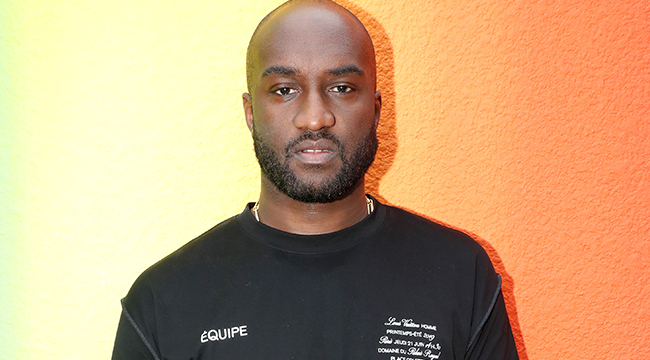
Virgil Abloh is an all-around creative. He’s been a DJ and creative director for Kanye West; he’s a skater; he’s a fashion designer for his own brand, Off-White; and, most recently and probably most notably, he was named the first black artistic director for Louis Vuitton. But with great power comes great responsibility… and great criticism. Like many fashion designers, he’s been accused of plagiarizing or stealing designs for his creations, and considering how information travels in the hypebeast community and how streetwear consumers can turn on designers based on word of mouth, the allegations were bound to be addressed.
In a recent cover story for The New Yorker, Abloh denies any wrongdoing, saying he is not stealing — he’s remixing. Being a DJ, Abloh is familiar with sampling — using smaller nuances, or even big chunks of songs to create brand new sounds. It would make sense that he would apply that principle to his work, even though the original designers may not be so thrilled to find the basis of their clothing featured in Abloh’s designs on the runway and sold for much more than they would be able to price them for themselves, simply because they have the Abloh, Louis Vuitton, or Off-White names attached.
Abloh and others have been called out and put on blast by industry watchdogs Diet Prada for plagiarism multiple times, but according to Abloh’s self-created “three-percent-approach,” — one of his “cheat codes” where original pieces can stand alone as new originals if changed by three percent — he’s making brand new designs that sample other pieces. He told The New Yorker, “Streetwear in my mind is linked to Duchamp. It’s this idea of the readymade. I’m talking Lower East Side, New York. It’s like hip-hop. It’s sampling. I take James Brown, I chop it up, I make a new song. I’m taking IKEA and I’m presenting it in my own way. It’s streetwear 10.0—the logic that you can reference an object or reference a brand or reference something. It’s Warhol—Marilyn Monroe or Campbell’s soup cans.”
For those unfamiliar with Marcel Duchamp, he was a French artist who took everyday objects — chairs, lightbulbs, even urinals — and created artwork by adding other elements to them. Just like Abloh, people denounced Duchamp’s work as unoriginal because it relied on items that already existed, so he didn’t really create anything new. The whole debacle begs the question, “In the art of fashion, is there really anything new? And who is allowed to take inspiration from whom?”
While some are angry with Abloh for “taking” the designs of less popular brands, claiming he only does it because no one will notice as those brands aren’t very well-known, his former boss’s wife, Kim Kardashian, is actually in the midst of claiming the reverse — that smaller brands steal from her. Though Diet Prada claims this is a farce — a secret advertisement by Kardashian for companies in which she has a hidden monetary stake.
So who is right in this situation? If fashion and art can sample and remix by only three percent to come up with new originals, it seems as if items of clothing will all start to look very similar, and no one can truly claim they were stolen from unless designs match up perfectly. It’s worth noting that the rule wouldn’t hold up in literature, filmmaking, art, or music.
Abloh claims he does not even see streetwear as something worn solely “in the streets,” but it can also mean high fashion. He told The New Yorker that he wanted Bernard Arnault, chairman and chief executive officer of the conglomerate that owns Louis Vuitton, to walk into this studio and ask, “Did you bring the streets in here?” With Abloh’s wide range of knowledge of street style and culture from hanging around New York’s Lower East Side during what was arguably the inception of street style in the ’90s, spurred on by sneaker brand Alife and skater brand Supreme, it’s easy to believe that he sees nothing wrong with “paying homage” to other brands by using them as inspiration, no matter how close to the original designs they are. But will three percent of a change ever be enough, and will the finger-pointing from both high fashion brands and lesser known brands continue to the point of widespread drama?
If things continue on their current track, we can definitely expect to see this issue continue to require commentary, coverage, and nuanced handling by industry insiders.
